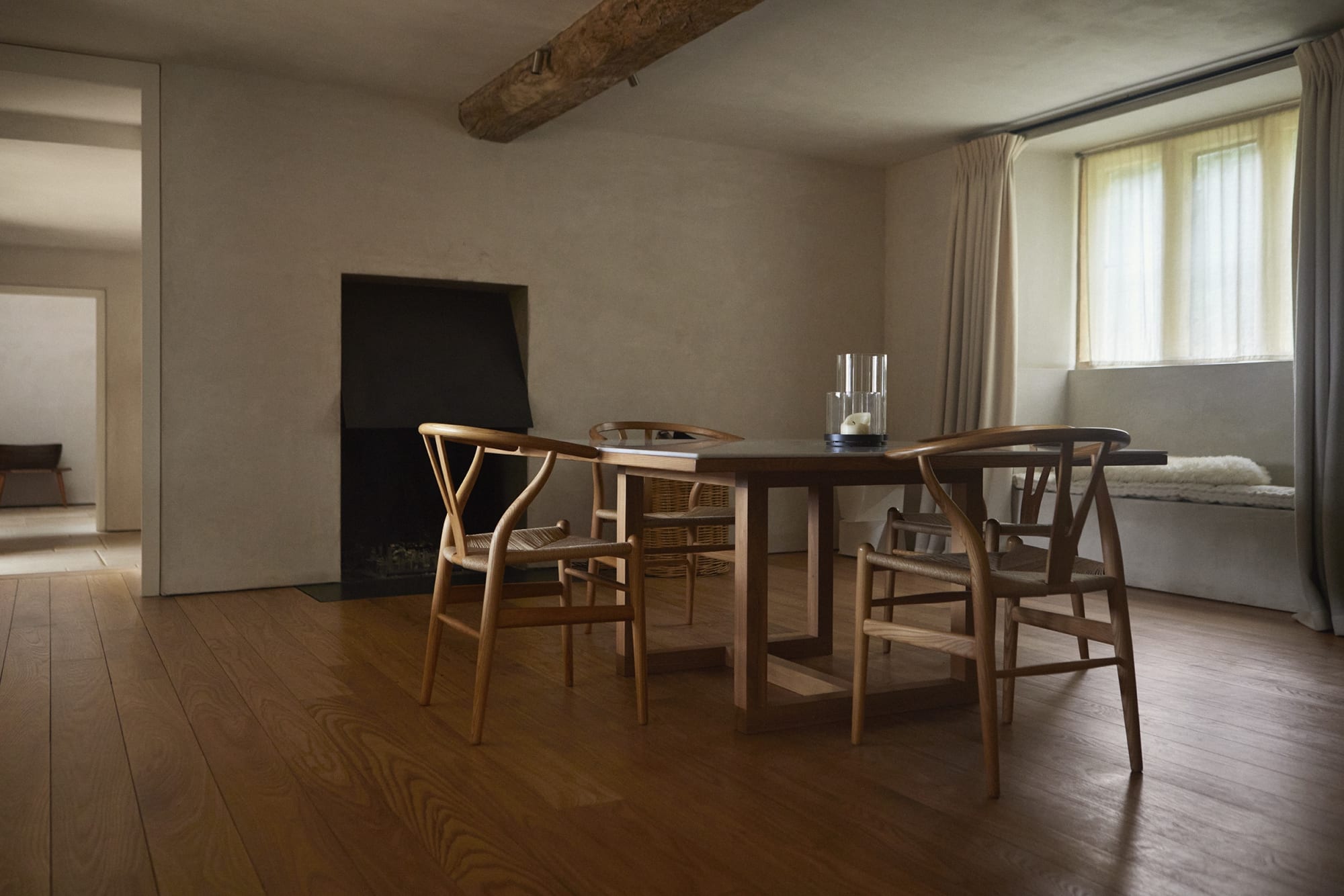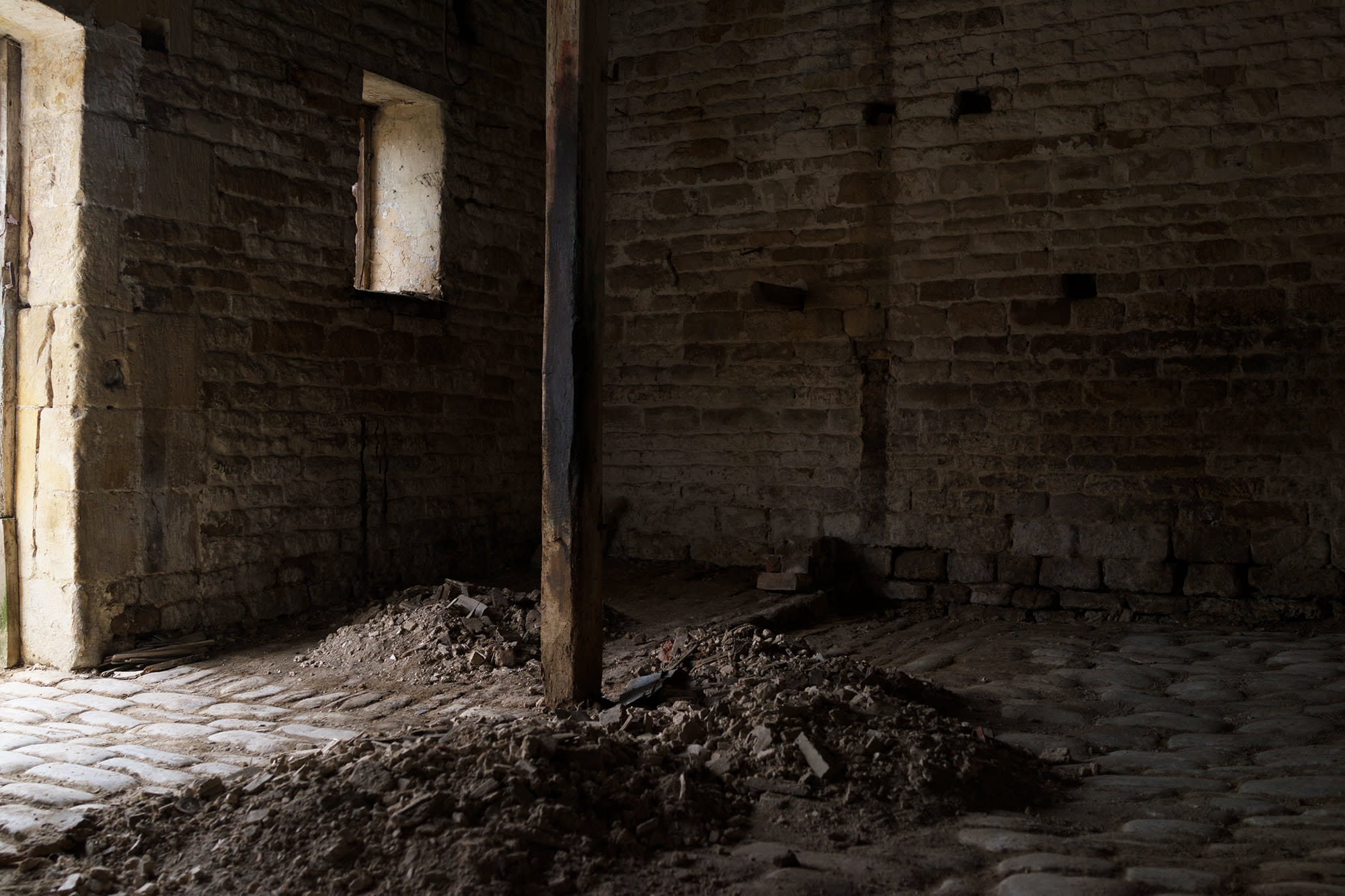


Family homes represent a shared thread in the story of Dinesen and John Pawson. In so many ways, he introduced Dinesen wood to the home - starting with the first Pawson House, continuing to reiterate and develop its presence in countless residential projects. He considers the consistency and closeness with which we engage with space, form and material in our homes to provide the most intimate experience of architecture, one afforded with time. The home satisfies a human need for solitude and communion, and it should be attuned to someone and someplace.

For Home Farm, his own residency in Oxfordshire, he transformed a 1601 farming complex by meticulously paring back, refining by removing. ‘Wood grain is such a story,’ says John, and it has rarely felt more true than here. Its spaces are simple in the most sensuous way, an intimate experience defined by light, materials and proportions. It represents an interesting direction in John’s exploration of wood, as it liberally blends Douglas fir, oak and elm, new, restored, and deeply marked by time. While the atmosphere is concentrated, minimal, it is layered, allowing the senses to decipher the what, when and how of each space. Quiet stimulation indeed.

Home Farm

The purpose of art is not the release of a momentary ejection of adrenaline but is, rather, the gradual, lifelong construction of a state of wonder and serenity.
- Glenn Gould

It illustrates how time and transformation are recurring themes that unite Dinesen and Pawson. In their hands, time is both history and something more tangible, close. It is present, a real presence, in their work together. It is about knowing when to respect history and when to nudge it in a new direction.

Home Farm

Home Farm
The 17th century farmhouses that make up Home Farm were originally constructed using local elmwood, a framework preserved and highlighted in John’s reinterpretation of the space. Meanwhile, Dutch elm disease had devastated elms across Europe in the second half of the 1900s, meaning it is mostly extinct on the continent. He called on Dinesen for help, both seeing the importance of bringing the material back home — preserving the spirit of the place. A painstaking process of finding a few elm trunks felled pre-disease ensued, allowing the necessary additions to be made. The old timber now ages and transforms alongside the ‘new’, another chapter in its winding history. As John says: ‘Architecture takes a long time’.


In so many ways, Home Farm leans into the embodied knowledge of craft, materials and the landscape which yields them. It trusts and relies upon, much like he approaches his own work. There is a beautiful vernacular quality to it.

Furthermore, the home refuses the notion of minimal architecture and form as blank space or sterile, fundamentally marked by texture, warmth and generosity. It is a home to be shared with others - family and friends, guests and collaborators. This conviviality and consideration for the humane aspects of architecture and design is at the core of Dinesen and Pawson’s journey alongside each other.